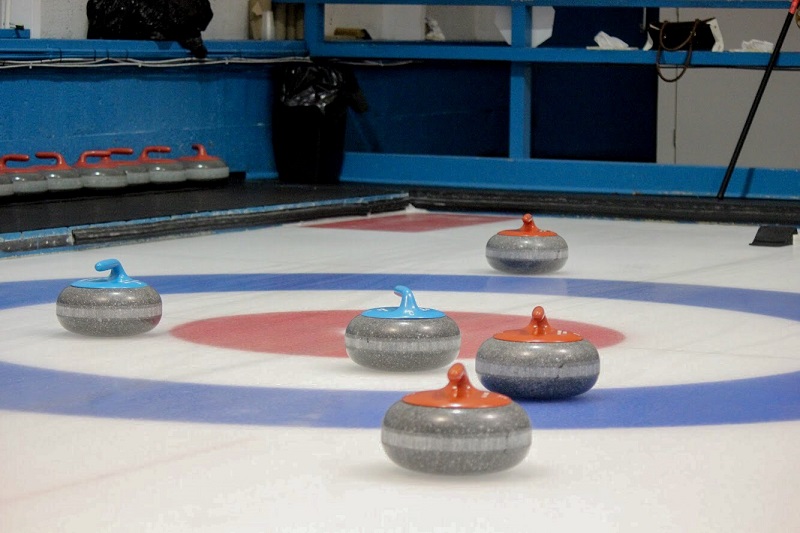Mixed doubles curling is attracting a new generation of Canadians
Curling is an old sport with a long history in Canada. But a new form of the game is sweeping across the nation: mixed doubles.
Mixed doubles made its Olympic debut at the 2018 PyeongChang Games. Canadian pair Kaitlyn Lawes and John Morris captured Canada’s attention en route to a gold medal.
Mixed doubles curling is a faster, new alternative to the traditional game. Curling normally has four players per team, and games last 10 ends (similar to innings in baseball) with each team throwing eight rocks (or stones) per end. Mixed doubles curling, as the name suggests, only has two players on a team, and each team throws five rocks per end, for eight ends.
Neil Gargul, the director of ice and property at the Pointe-Claire Curling Club, said mixed doubles is a great way for people to join curling without having to put together a four-person team.
“It’s a lot easier to make a team,” he said. “At the pro level, a [traditional] game would take two and a half hours, whereas the mixed doubles are done in an hour and a half. It’s a much faster game. There will be a lot of popularity in mixed doubles, and I know the pros are really eager to do mixed doubles, and dedicate themselves.”
The Canadian mixed doubles championship was held in Leduc, Alta., from March 28 to April 1, and saw some of the top curlers in the country form teams. Jennifer Jones, arguably the best Canadian curler of all time, paired up with her husband, Brent Laing, who competed in the 2018 Winter Games.
Although mixed doubles curling could attract a new generation to curling, Gargul said a curler needs to be more “technically-gifted” to succeed in mixed doubles.
“You need to be a better curler to be good at mixed doubles than the team sport,” he said. “There are a lot more high-precision shots. The misses could turn into a lot of points, and that’s the exciting part; it’s high-scoring.”
A stereotype surrounding curling is that it’s a relaxed sport, and you don’t need to be in good physical shape to play. Mixed doubles curling challenges that notion, since a player throwing the rock also has to sweep, and they’re constantly moving around.
Even traditional team curling is starting to require more physical strength, Gargul said, whereas in the past, teams worried less about fitness.
“You need good flexibility, good balance and good strength,” Gargul said. “To be a good curler, you have to be in good shape.” He compared curling to golf, a sport in which athletes now focus more on their fitness.
“That’s the new generation of curling, where they realize the physical fitness portion of it,” Gargul added. “But that doesn’t mean you can’t go out to curl and just have fun.”
Curling is a social sport at any level. At Gargul’s Pointe-Claire Curling Club, players from opposing teams sit down after their games for a beer.
“We have a great community at the club,” Gargul said. “Win or lose, the teams sit together after the game and you get to know all the different people in the club.”
Curling is unlike other team sports, where you might dislike your opponent during a game. Gargul said there are some rivalries in curling, but opponents at any level still congratulate each other on good shots.
“Because it’s a precision sport, you have to be in control of your emotions, and be calm when you’re throwing your rock,” said Gargul, who used to play high-intensity team sports like hockey, football and soccer. “Having a level of intensity doesn’t necessarily help you in curling.”
For university students looking to try the sport, Gargul said people can rent the ice and equipment at the Pointe-Claire Curling Club by visiting the club’s website or calling.
“Most clubs offer rentals. You could rent the ice, and a group of eight of you could go out,” Gargul said. “You will have a blast.”
Video by Kenneth Gibson.
